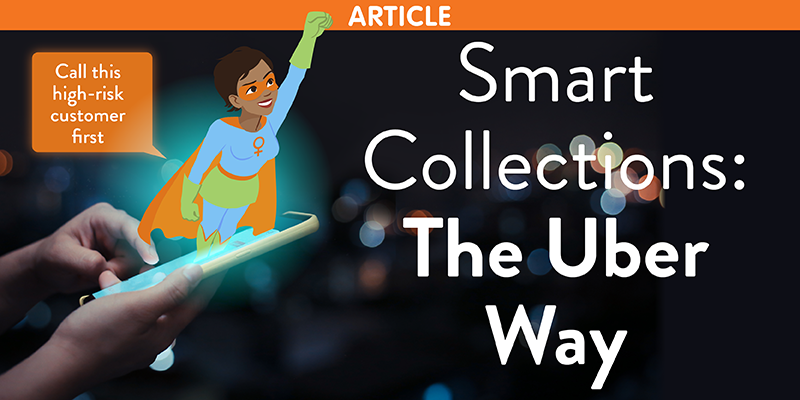When managing business processes, most agree the ideal combination is Artificial Intelligence plus Human Intelligence.
The Collections Process is a perfect example. This article lists 5 ways Autonomous Software is helping transport and logistics giant Uber achieve a whopping transformation in its accounts receivables.
- Some context: Autonomous Software is intelligent technology that uses data to learn. This means the technology that Uber is using to help manage its collections process is learning from:
- a) data relating to customers, such as payment history, credit worthiness, and how long Uber has spent on the phone talking about Collections with each customer and
- b) data relating to other users’ interactions with those same customers.
As the seconds, minutes and days go by, each company’s profile expands and the technology’s intelligence concerning each customer deepens. As a result, when the system provides a confidence score regarding each customers’ reliability to pay on time, we can be pretty sure that the confidence score is dependable.
2- When it comes to building out a profile of each customer so that sensible actions can be taken, humans cannot keep up. Autonomous Software pulls up lists of customers to call and organizes lists according to “Worst First.” There’s no point in having your Collections Analyst calling low-risk customers first. Instead, early morning calls need to be made to the “red flag” customers who will end up in your “write off” bucket if ignored. Uber works with HighRadius for its B2B and Freight businesses which transact with 15,000 customers. The HighRadius Autonomous Software Digital Assistant, known as Freeda, does all the heavy lifting so each Uber Collections Analyst can focus on reducing:
- Risk in receivables
- Aged debt
- Days Sales Outstanding (DSO)
- Write offs
3 -How does Freeda work? It creates a Call Dashboard which is at the center of the Collections Analyst’s work world. Once logged, the Call Dashboard directs your Collections Analyst so they know:
- Which customer to call
- The intent of the call and the call “talk track” for each customer
- How long the call should take
- How many calls will be made in total that day
- How long the Collections Analyst will be on the phone
- How much value should be collected today based on the analyst’s calls
4- Based on this information, what happens next? Freeda is like Siri or Alexa. Let’s say the first Customer on the list is “George.” The Collections Analyst says “Freeda, call George.” The system connects the Analyst to George.
5- Then what? Not only has Freeda built a profile for each customer, built a worklist for the Collections Analyst based on urgency, and connected the Analyst directly to George, but it will then go on to:
- Transcribe the entire call and log this in the system.
- Capture all the actions that come out of the call (maybe in this case the Collections Analyst needs to resend two invoices and a delivery note).
- Log in the system key outcomes, like update the Promise to Pay date that George referenced in the call.
- Present a follow up email for the Collections Analyst to send to George with invoices and delivery note attached, a reminder of the Promise to Pay date quoted on the call, and a link to the payment site.
Freeda represents optimal efficiency in Collections. The Collections Analyst has all relevant contextual information at hand, doesn’t need to take notes on the call, has limited call follow-up work, and can make sure the “human element” is high quality. Then they can call the next customer.
Freeda’s motto should be “Call. Collect. Repeat.”
Talking to HighRadius about Freeda, they admit it’s still an Early Adopters’ market, and that from 2022 to 2027 they will see technologies like Freeda become mainstream. It’s not surprising that one of their Early Adopter clients is Uber, a world-leading vanguard in disruptive technology.
Some benefits to the wider business to assist cash flow and make available working capital to invest or direct towards M&A activity are:
- Reduction in DSO by 14 days
- An increase in growth by 20% in their Collections Effectiveness Index
- Staggering 7000 automated correspondences sent each month
Homer Smith, Global Process Owner - Billing, Credit and Collections, at Uber, puts it this way:
“Autonomous Collections enables our collectors and users to be much more efficient in their process. For example, when making collection calls, they’re able to retrieve information about a customer’s account, view the notes, the most recent interaction with that customer, and then provide up-to-date real-time information, right there on the call.”
Does this mean the end to human intelligence in Collections? “No” responds HighRadius. The perfect match is human and artificial intelligence. This combination lends itself to top performing Collections KPIs.
To read this article you have to be registered.
Become a member to access all content and / or download it

